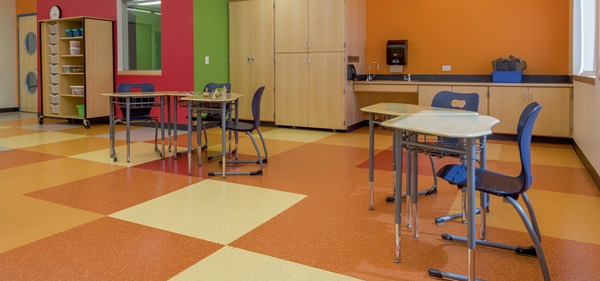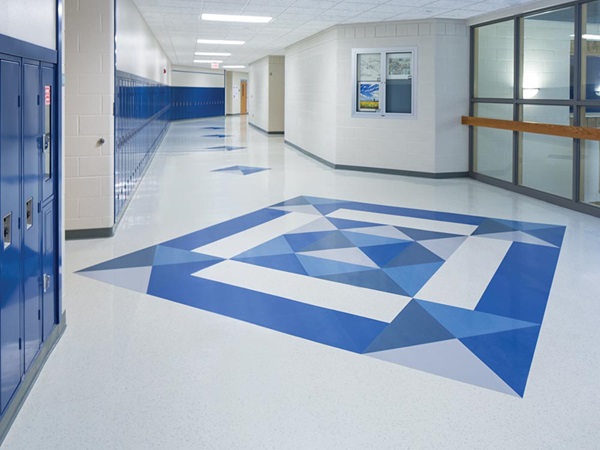
Referred to as the “third teacher,” the learning environment affects students’ performance and outcomes. According to the 2017 American Society of Civil Engineers, 24 percent of public schools were rated as being in fair or poor condition, with 52 percent of schools needing to make repairs or renovations to be considered in good condition. Virtually every aspect of the built-environment impacts the health of students, faculty and staff, including daylighting, ventilation, acoustics, walls, flooring, windows and temperature.
Environment and learning
Though often overlooked, flooring can have significant impact on student success, playing a key role in the overall health and safety of an environment. Among other interior elements, the type of flooring selected for a school can contain inferior finish materials, which leads to speech intelligibility, poor indoor air quality and increased glare and reflectance.
Just as carpet is known to minimize noise, premium rubber flooring also reduces the amount of sound being generated. In fact, in most cases, the 4mm rubber flooring provides at least twice as much impact noise reduction than other resilient types tested.
Color, an important element to human-centered design, should also be considered in the classroom environment to maximize information retention and stimulate participation. The flexibility of premium rubber flooring allows for inlays that stimulate the mind and encourage creative thinking in a fun, educational way.

Create a long-term healthy environment
Schools built before the 1980s may contain hazardous building materials; for example, resilient floors that require stripping and recoating. This maintenance protocol can release an amount of volatile organic compounds (VOCs) from a single waxing that is comparable to the number of VOCs emitted from the flooring over its lifespan. Schools that specify low VOC certified flooring will best support human health and wellness. Premium rubber flooring does not require coating, stripping and refinishing; therefore, improving human health, operational costs and total cost of ownership (TCO).
In addition to the long-term maintenance benefits, rubber flooring has extremely dense, closed surfaces that are dirt-repellent. Due to its nonporous nature, rubber has reduced susceptibility to soiling, improved hygiene properties and no exposure to cleaning chemicals.
Total life-cycle cost benefits
In many K-12 schools, VCT is chosen for first-cost – determined based on initial cost versus long-term cost. Premium rubber flooring’s never-wax protocol impacts its total Life-cycle Cost Analysis (LCCA). As such, rubber flooring has a reference service life of 35 years, which results in only needing to be replaced once over the course of a building life of 50 years.
Rubber flooring’s minimal maintenance requirements reduces operational costs as well as slips, trips and surface contamination, while providing greater speech intelligibility and improved air quality.
For more information on how the built-environment can impact student health, performance and success in K-12 schools, specifically through the use of flooring, download our whitepaper.

 USA | English (US)
USA | English (US)